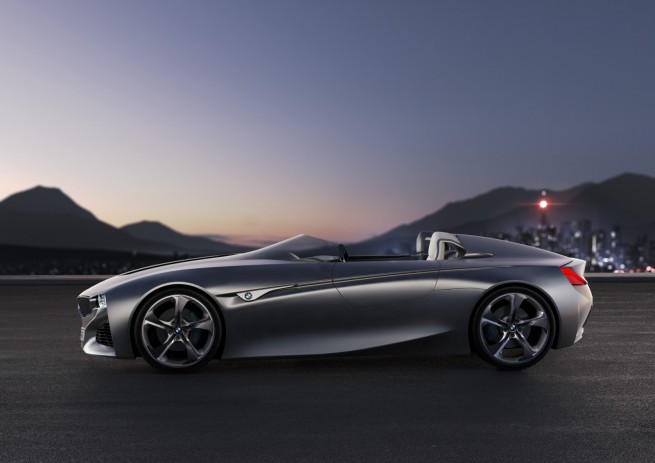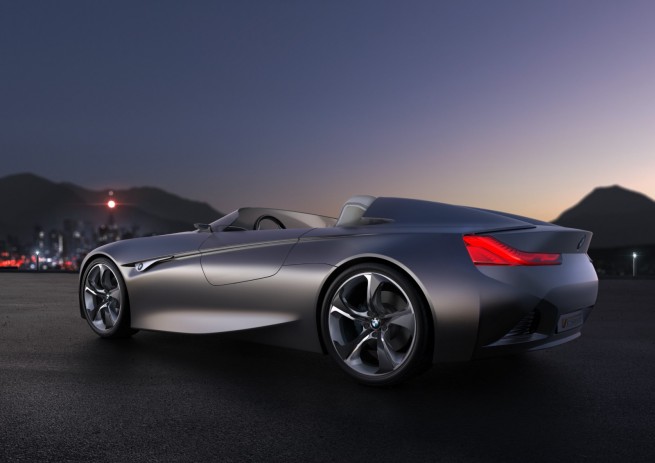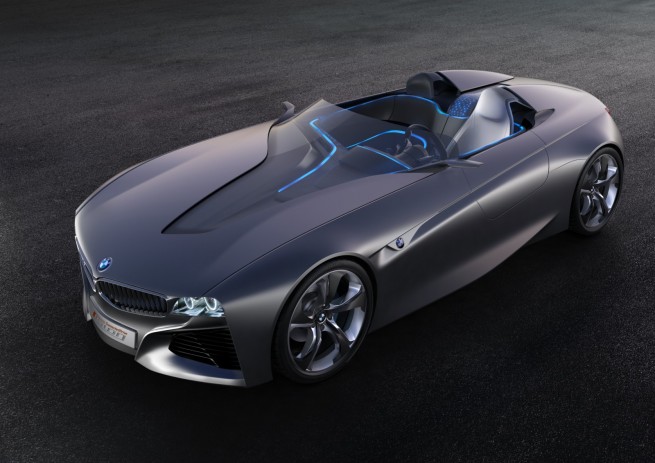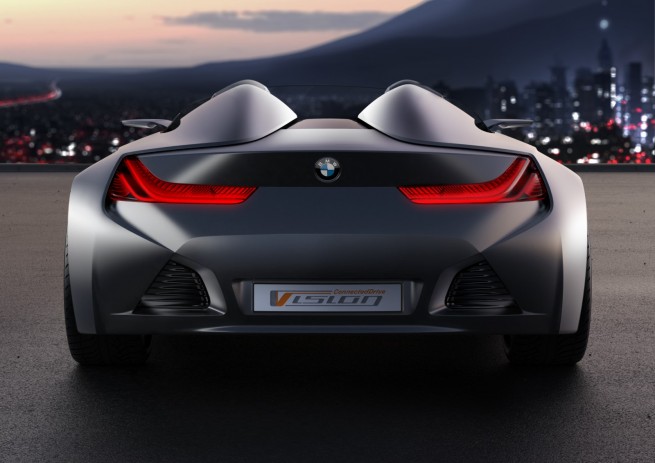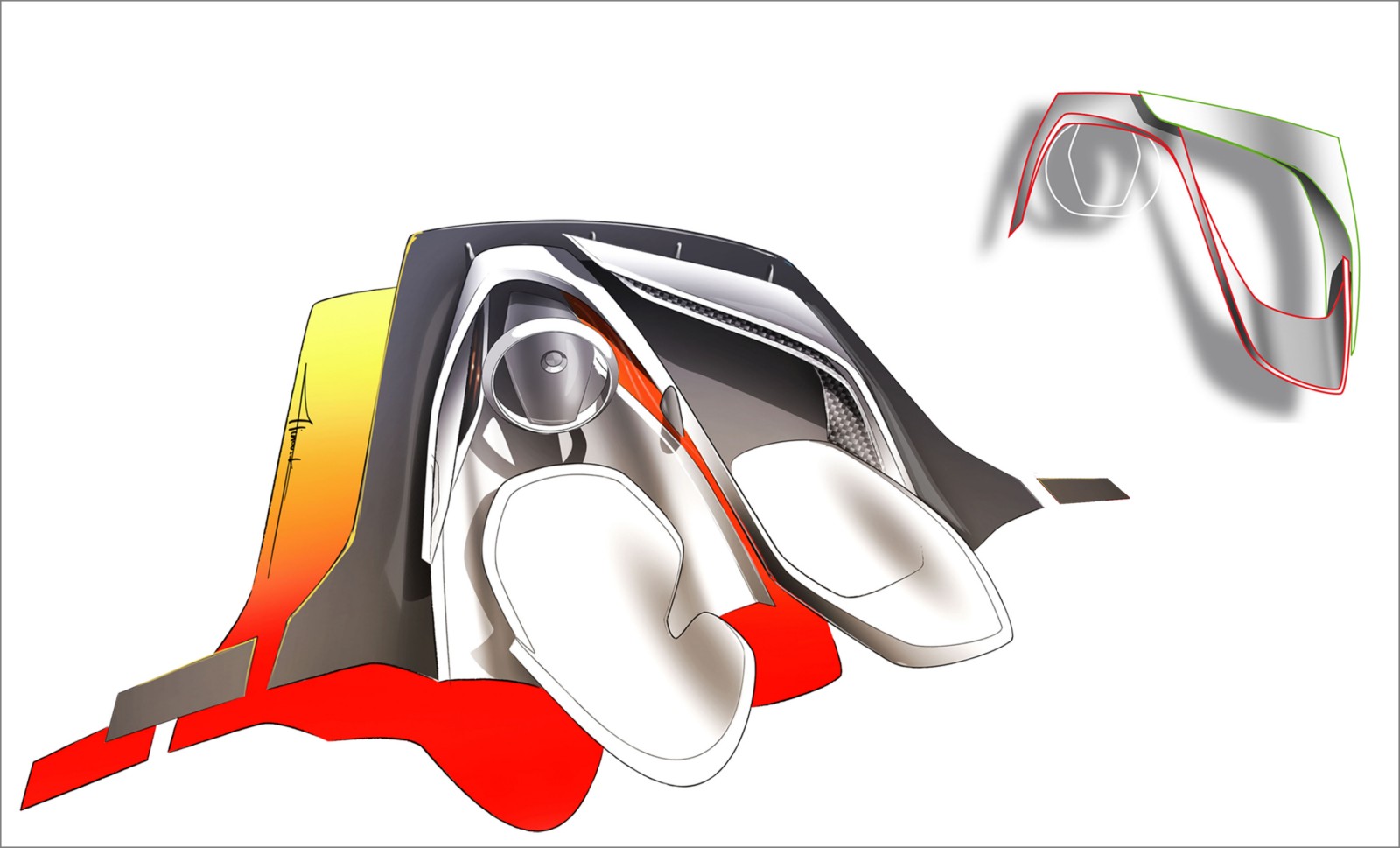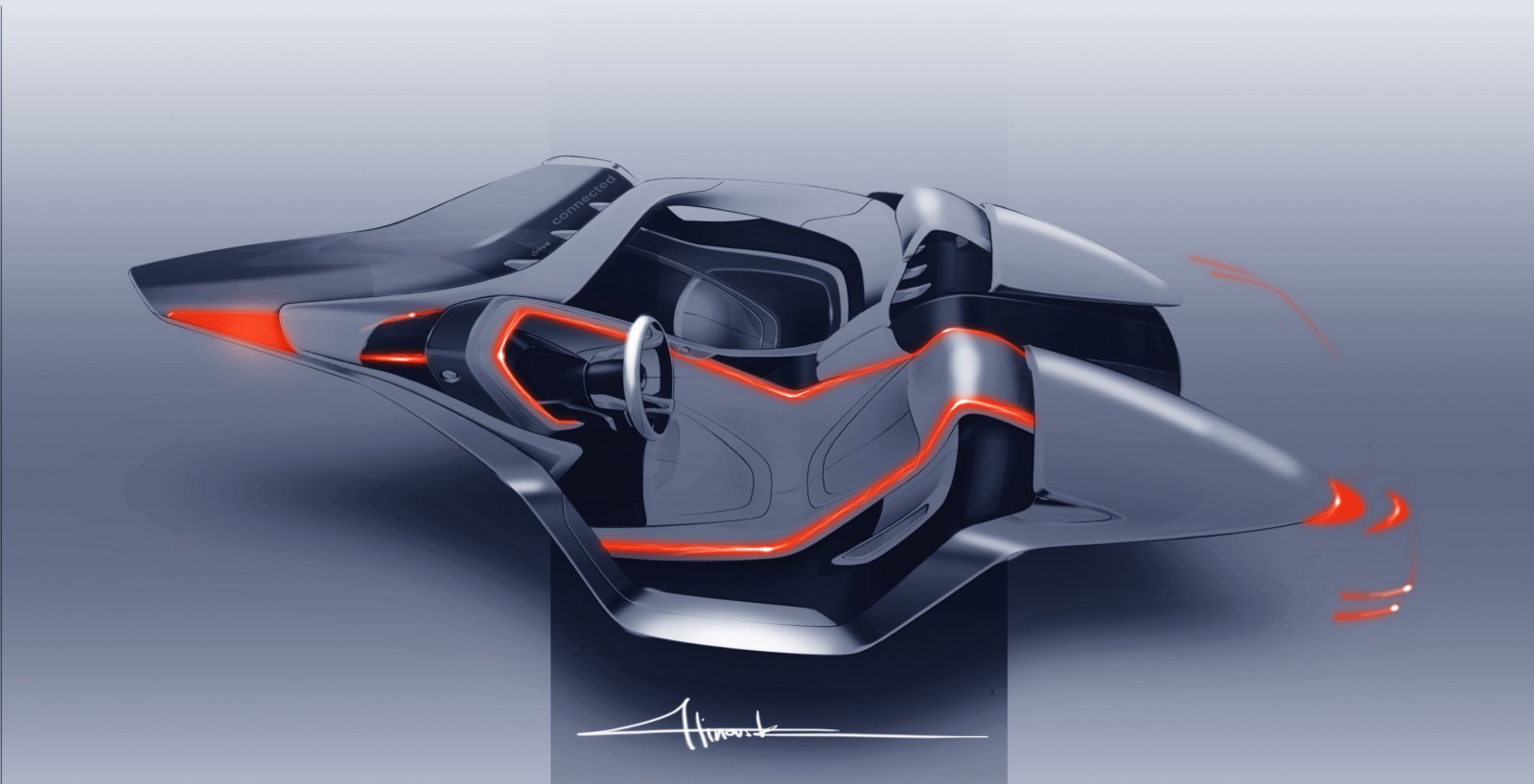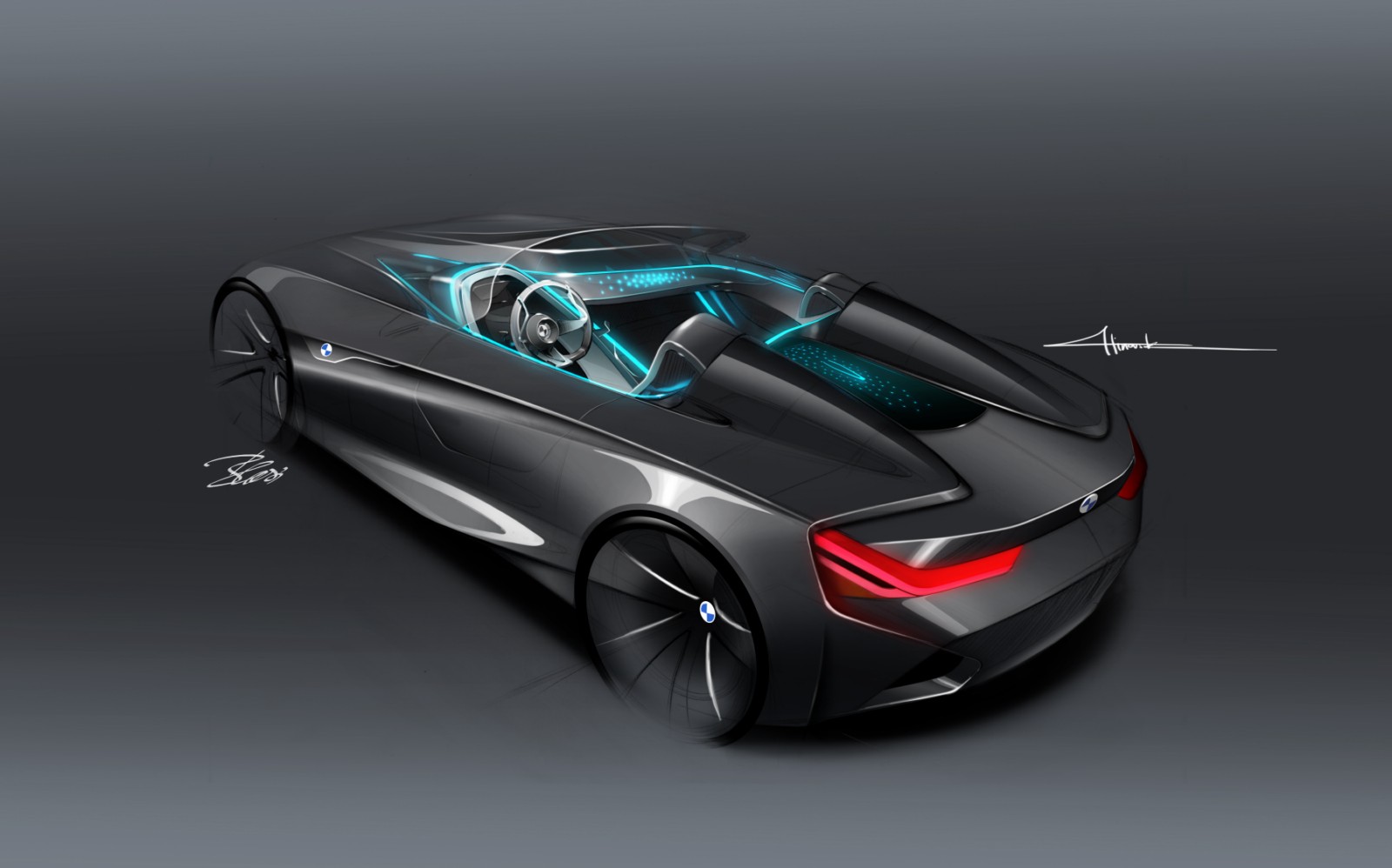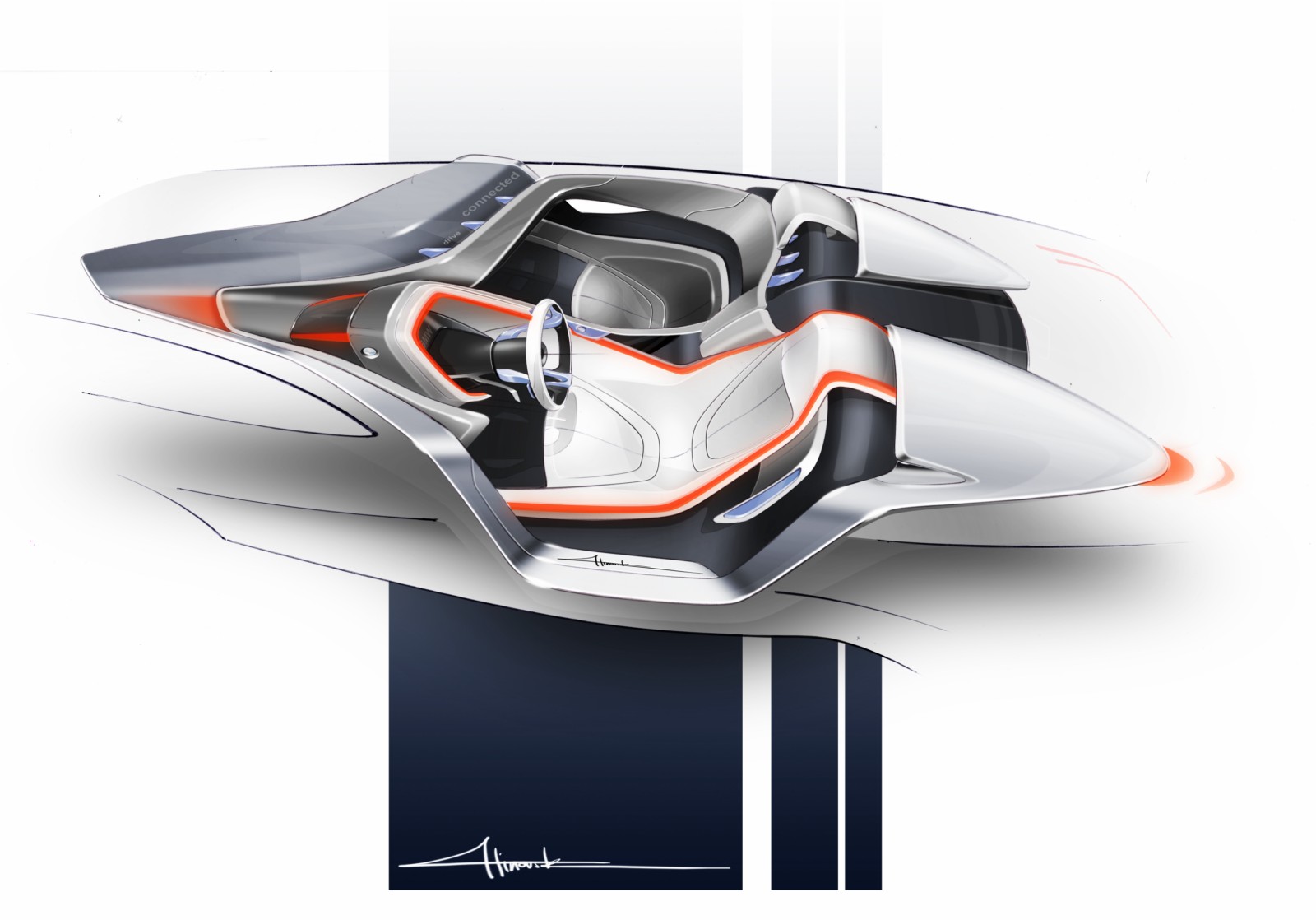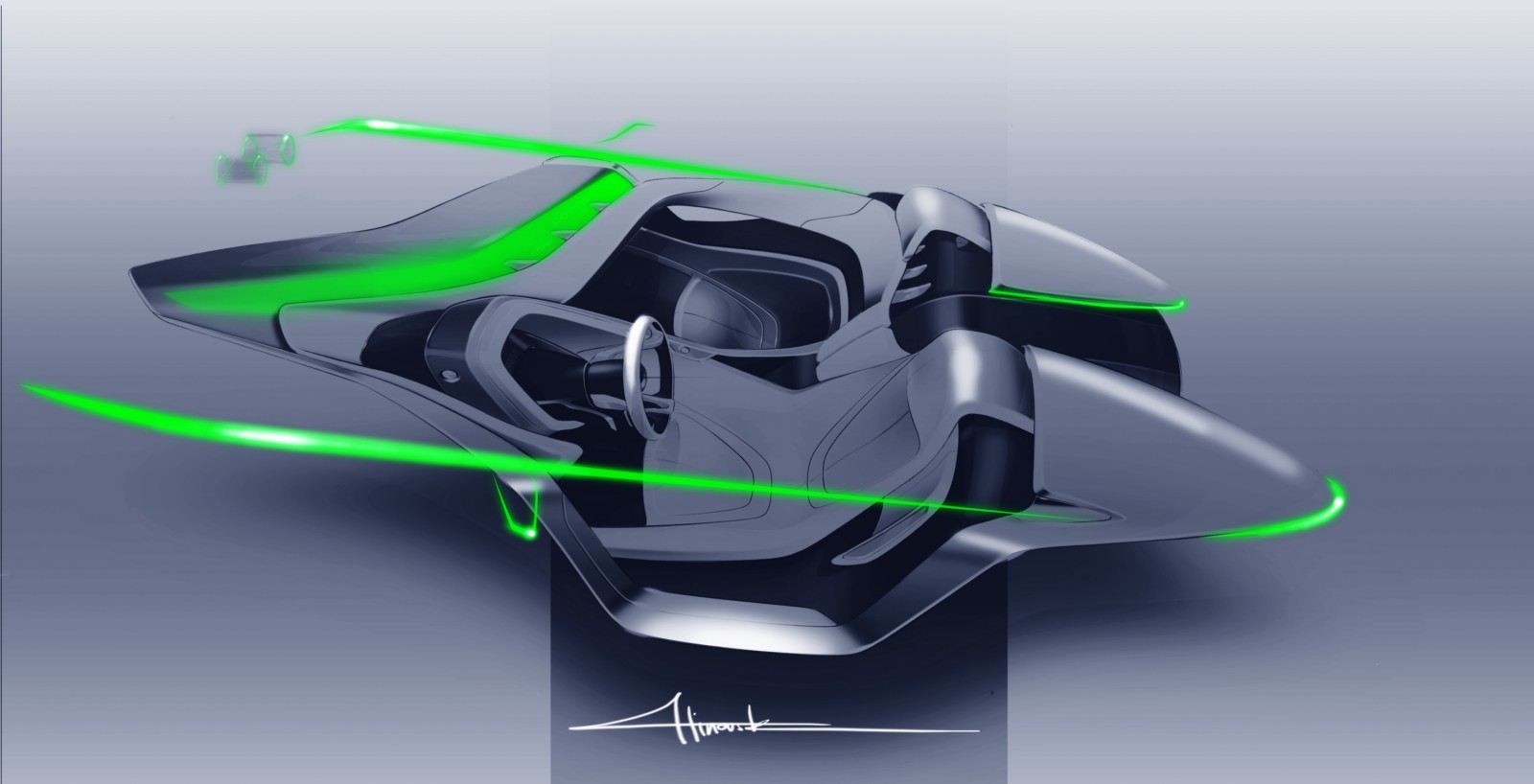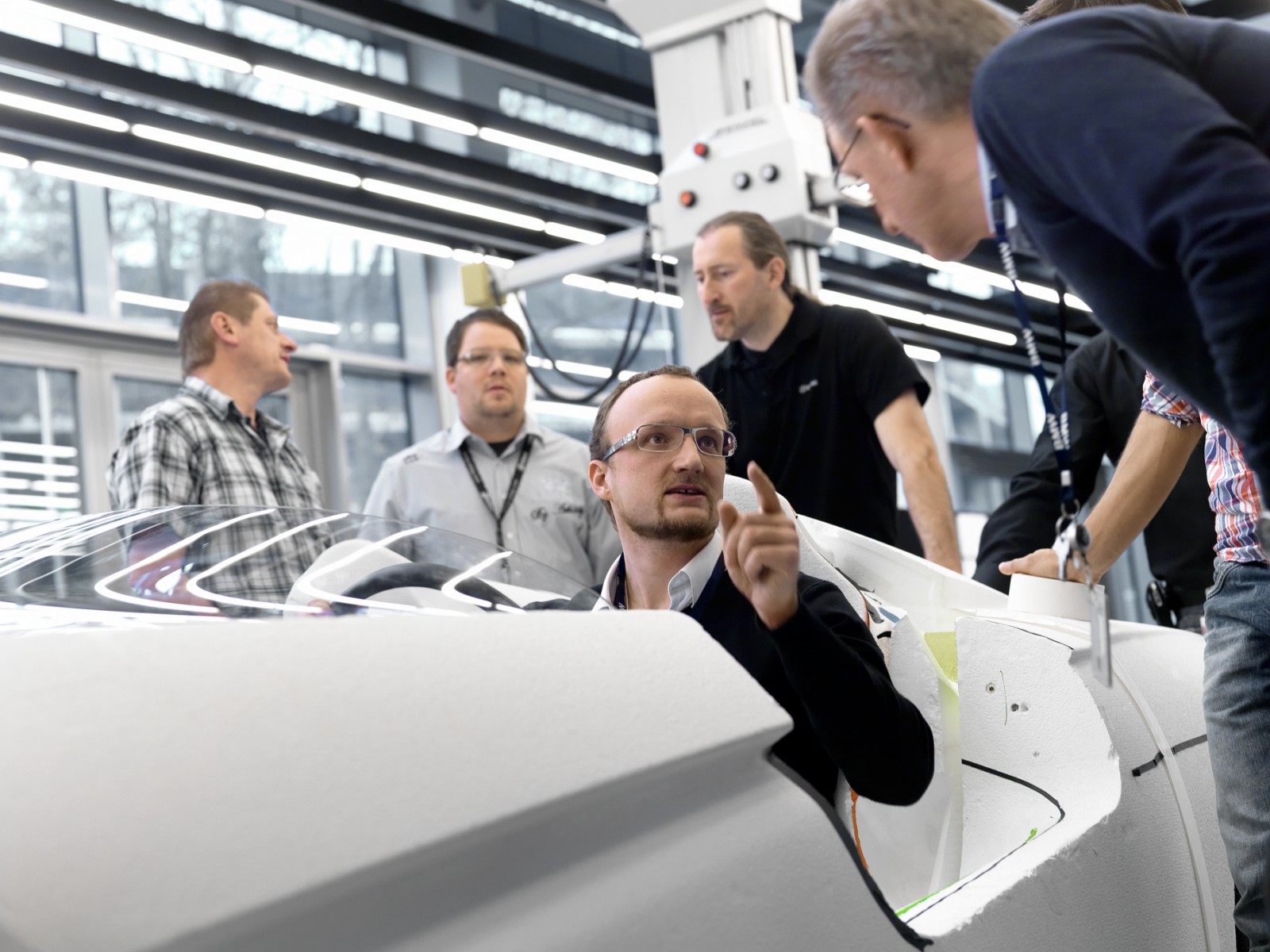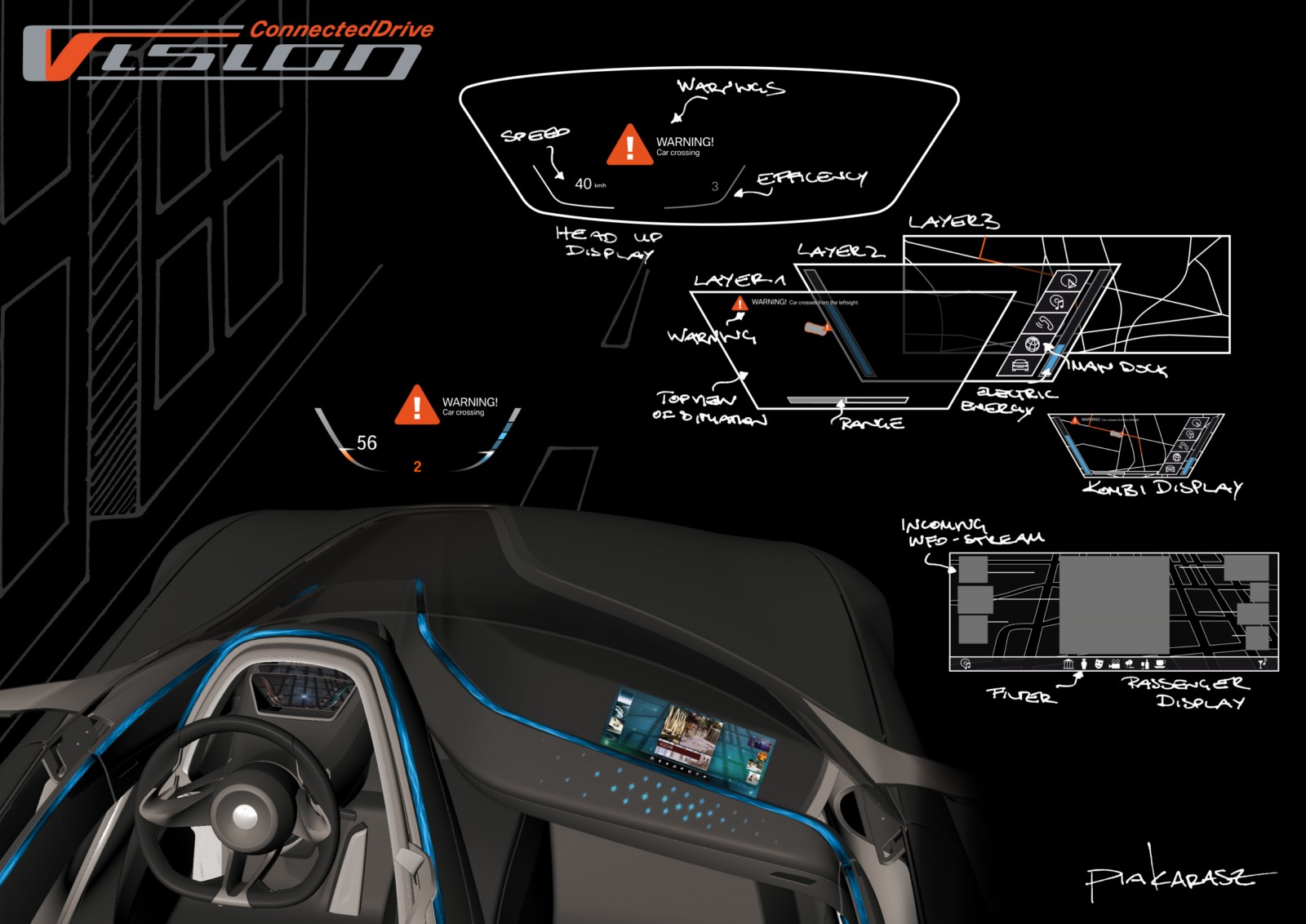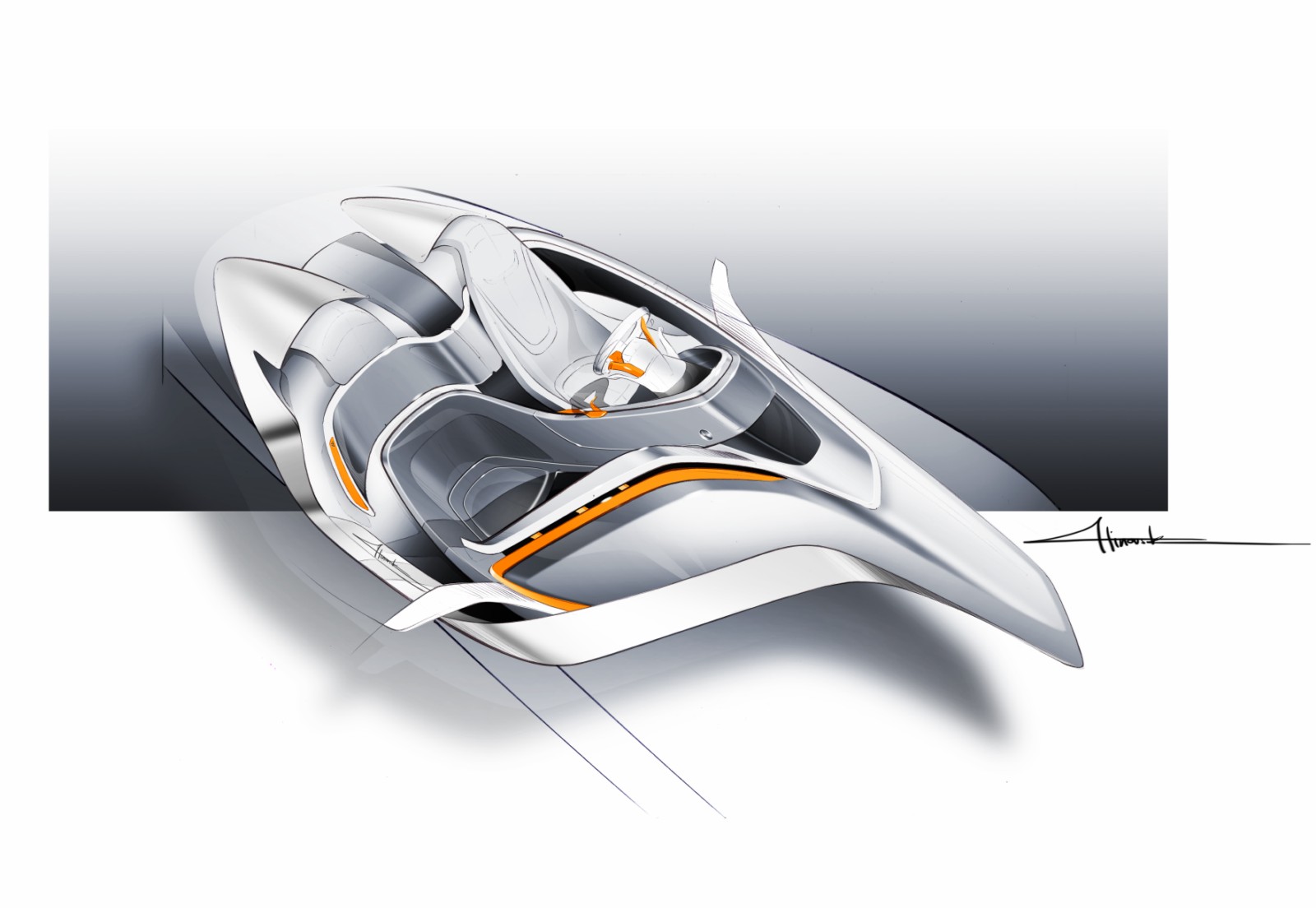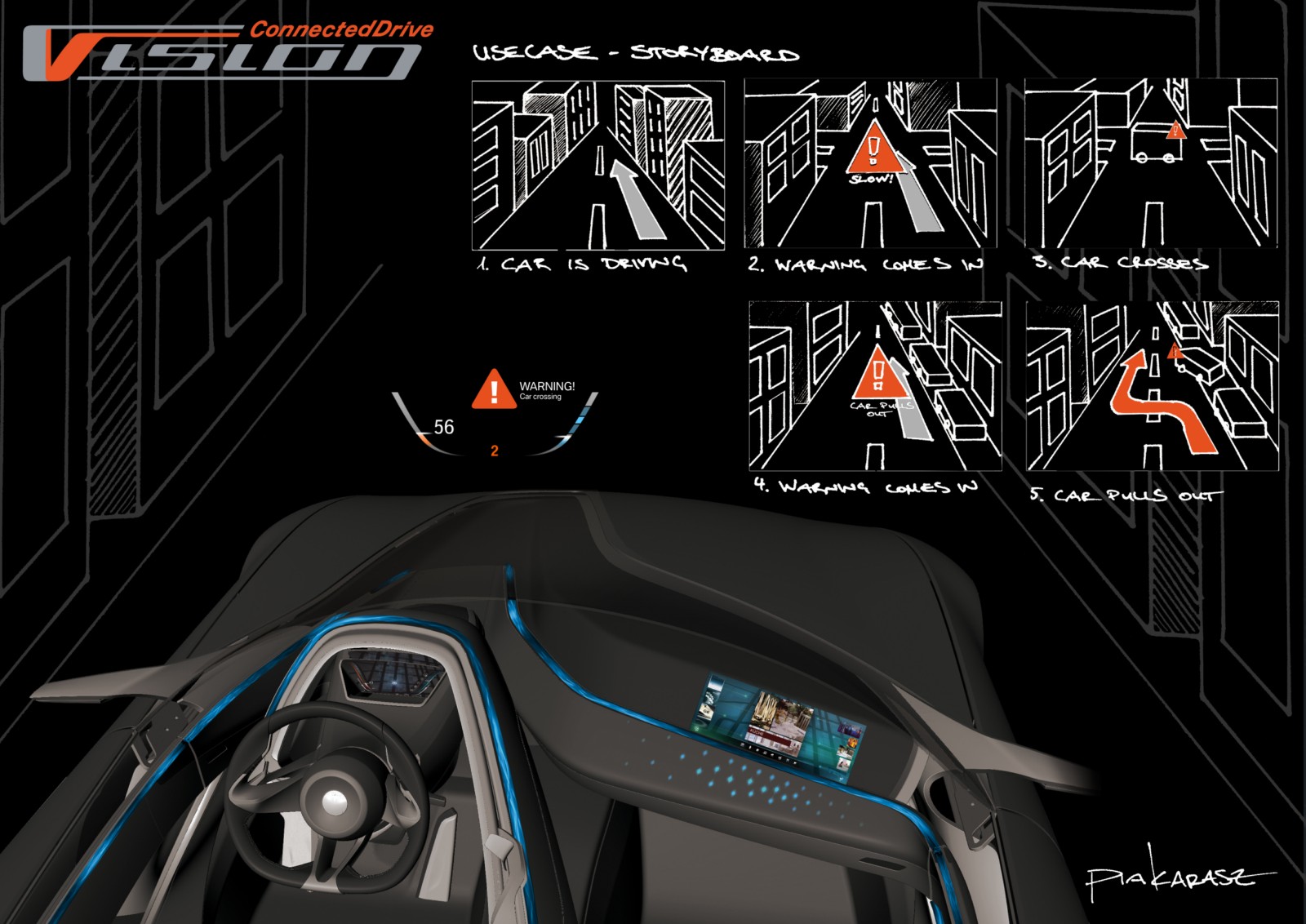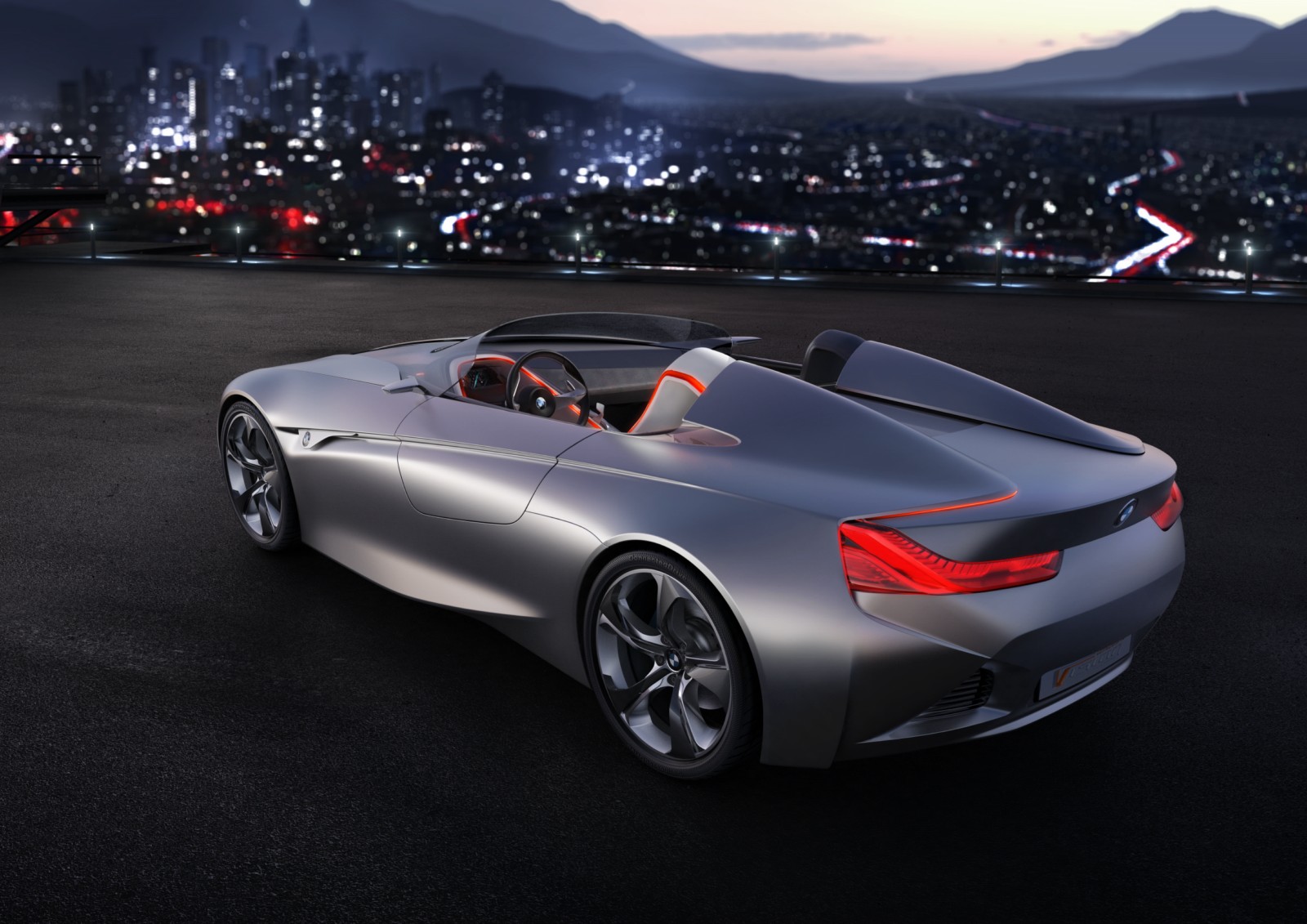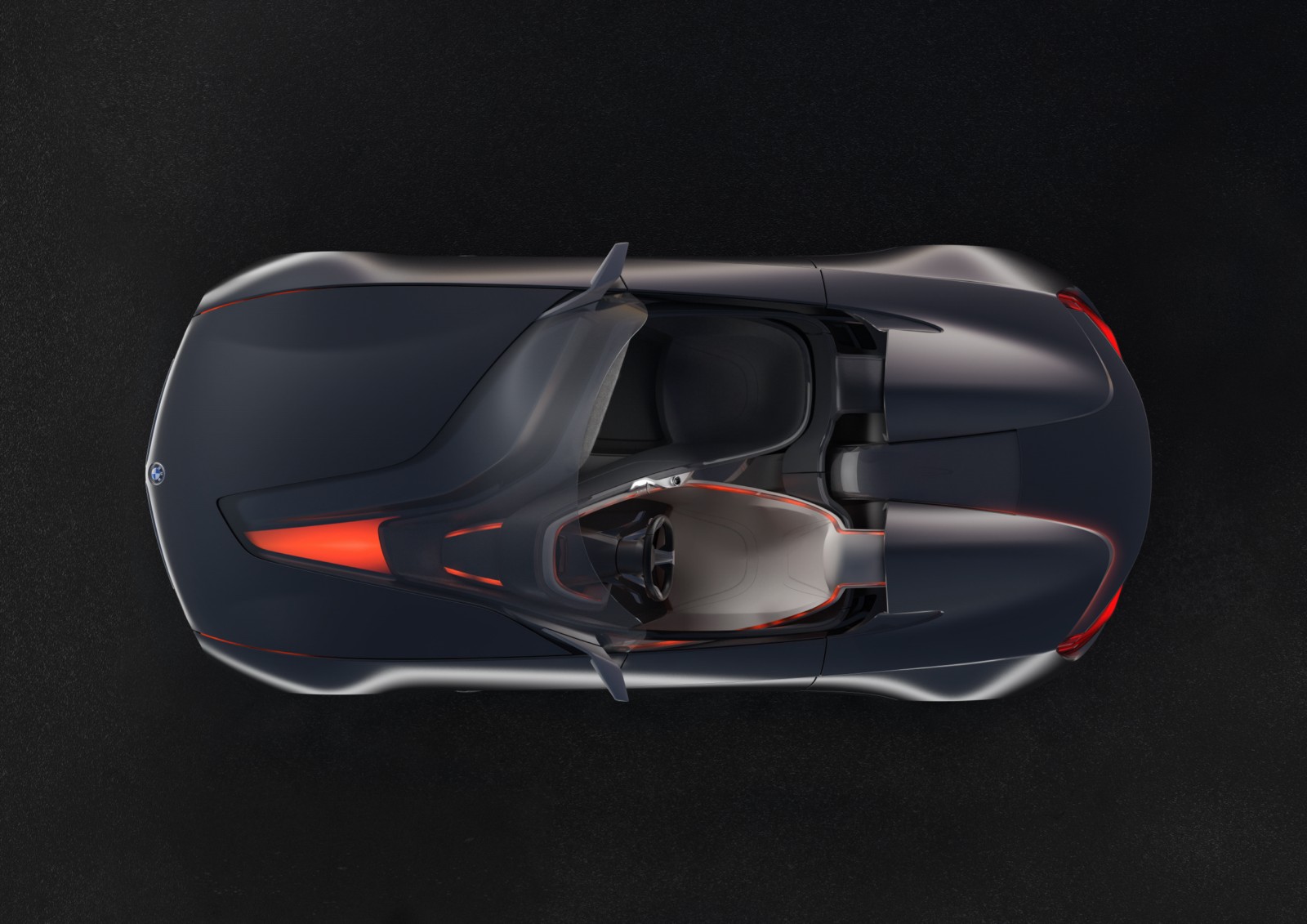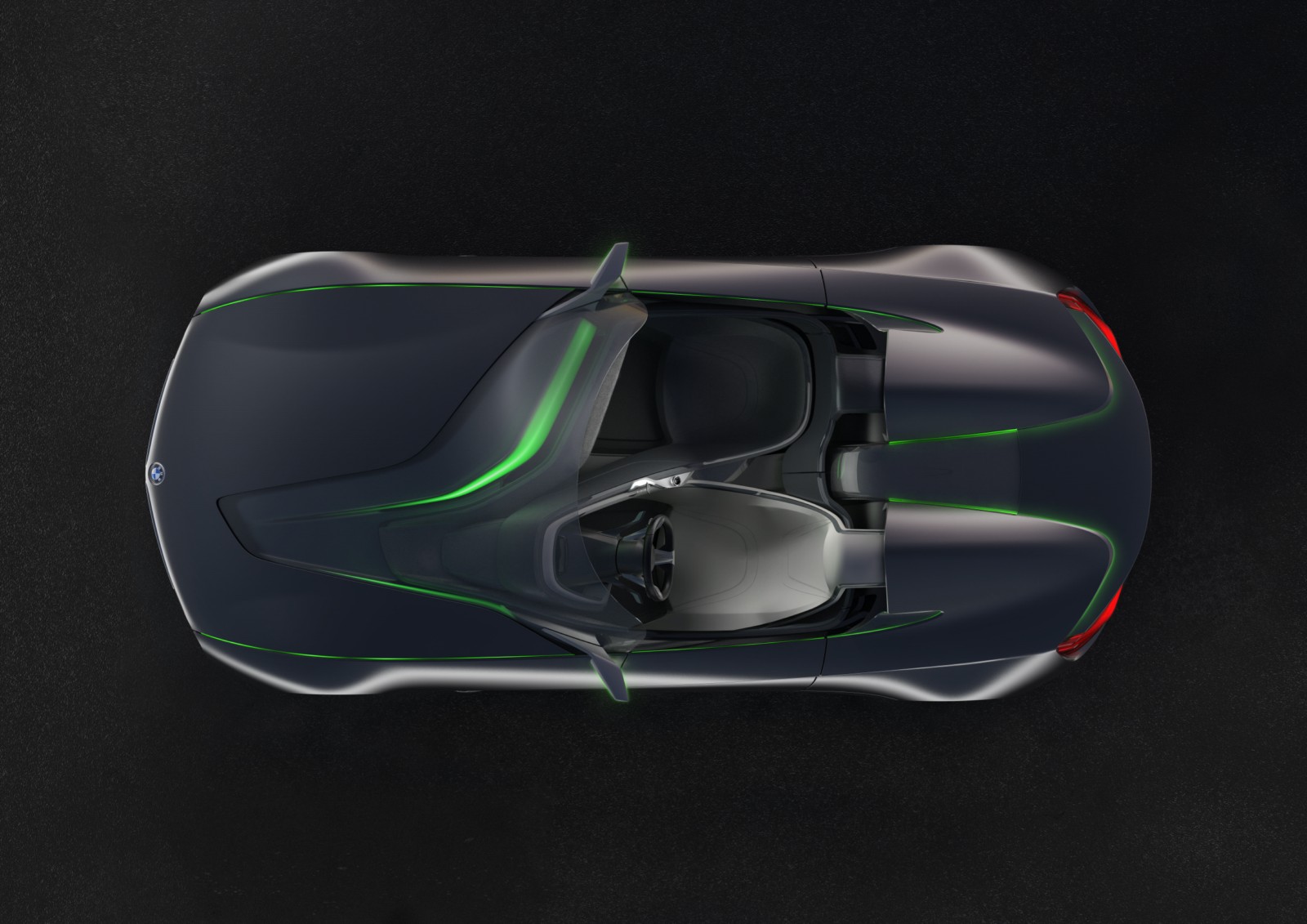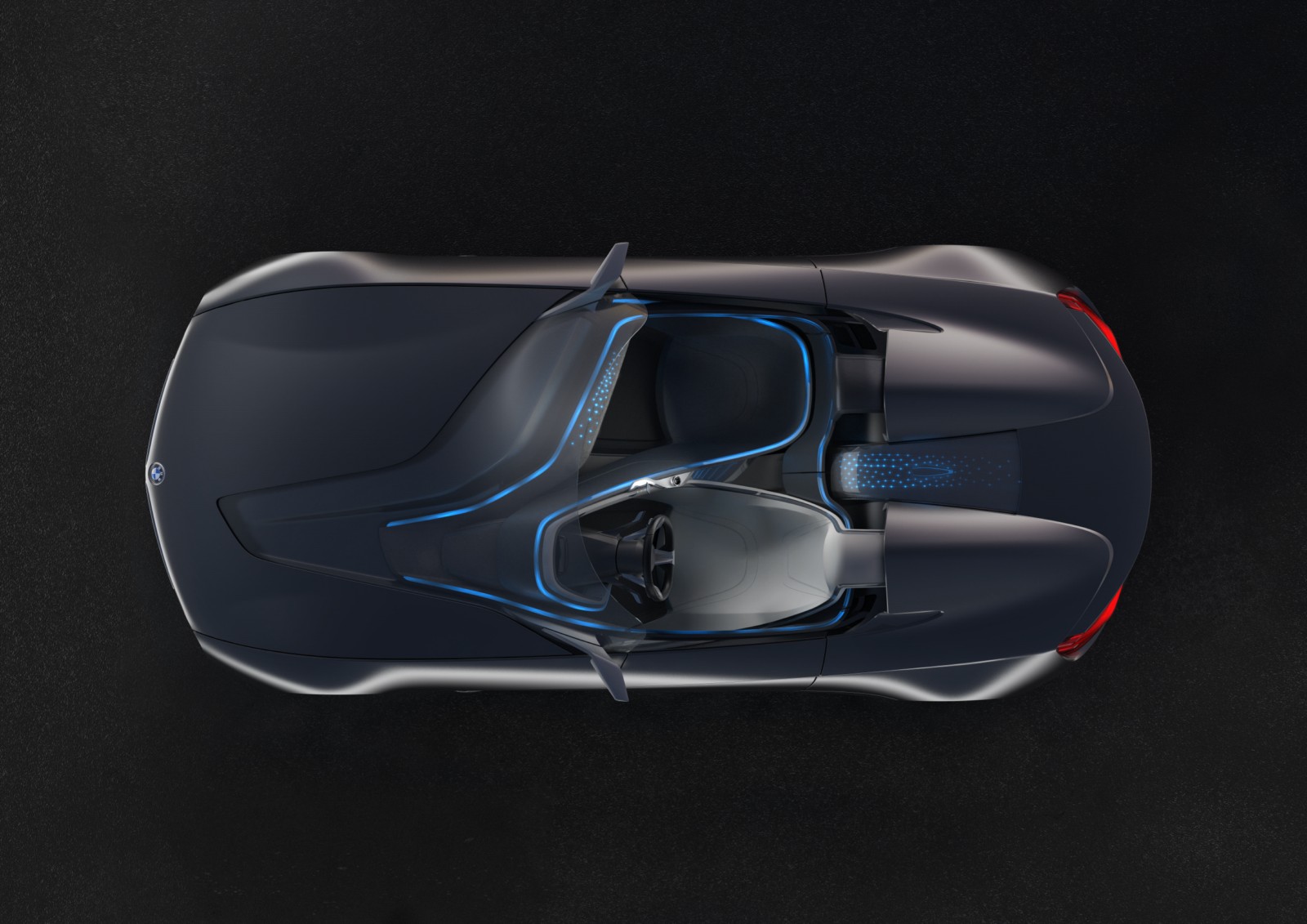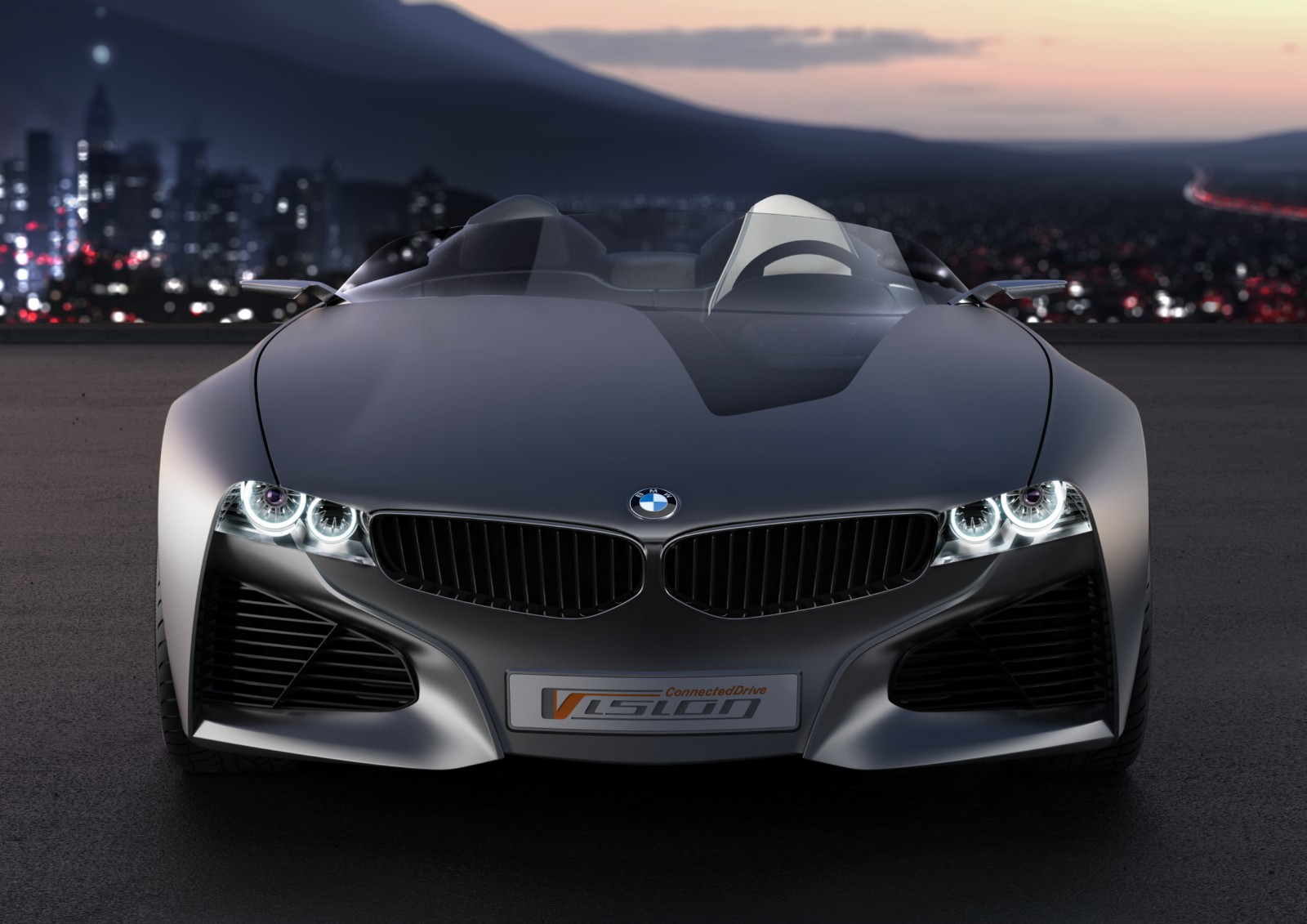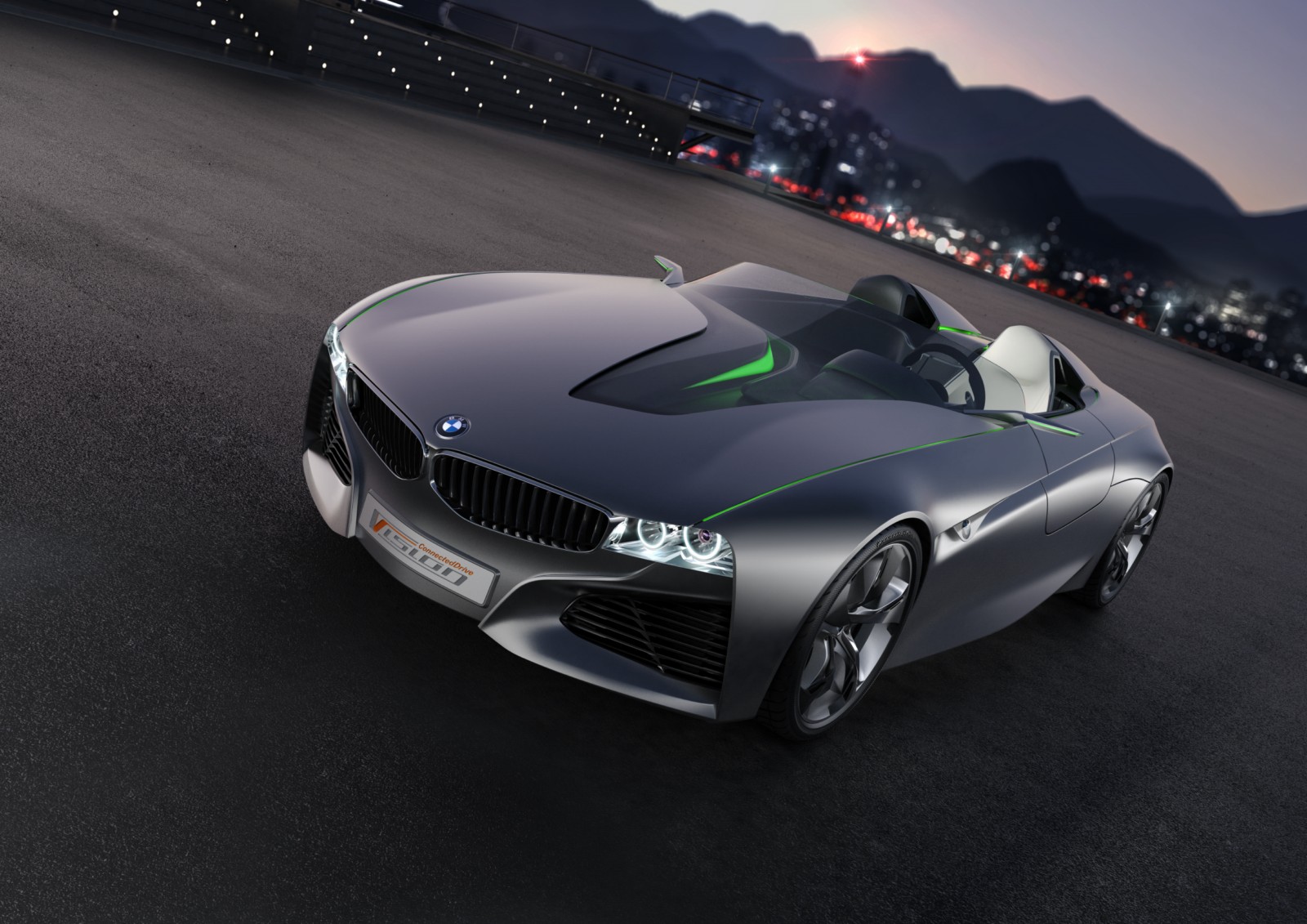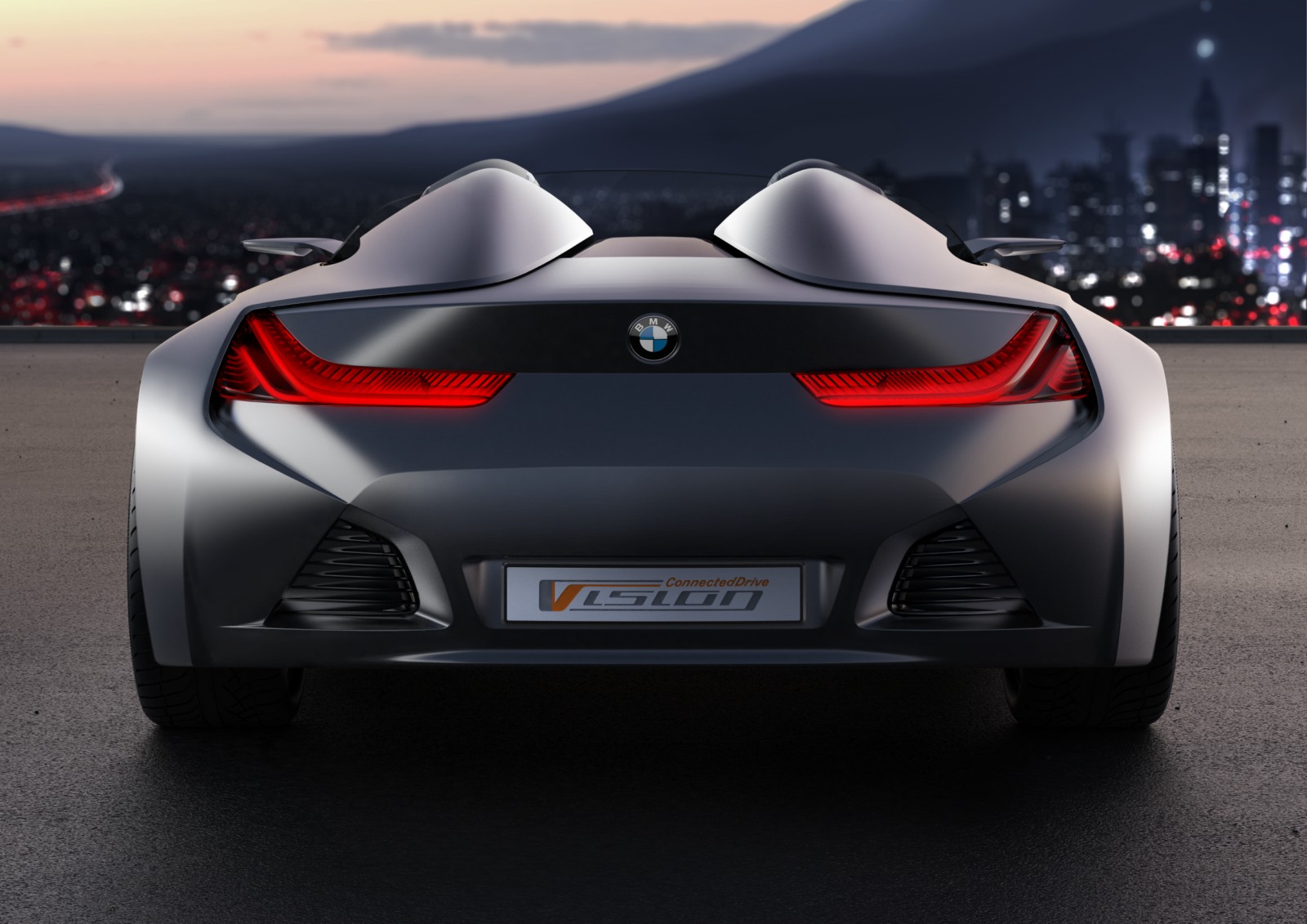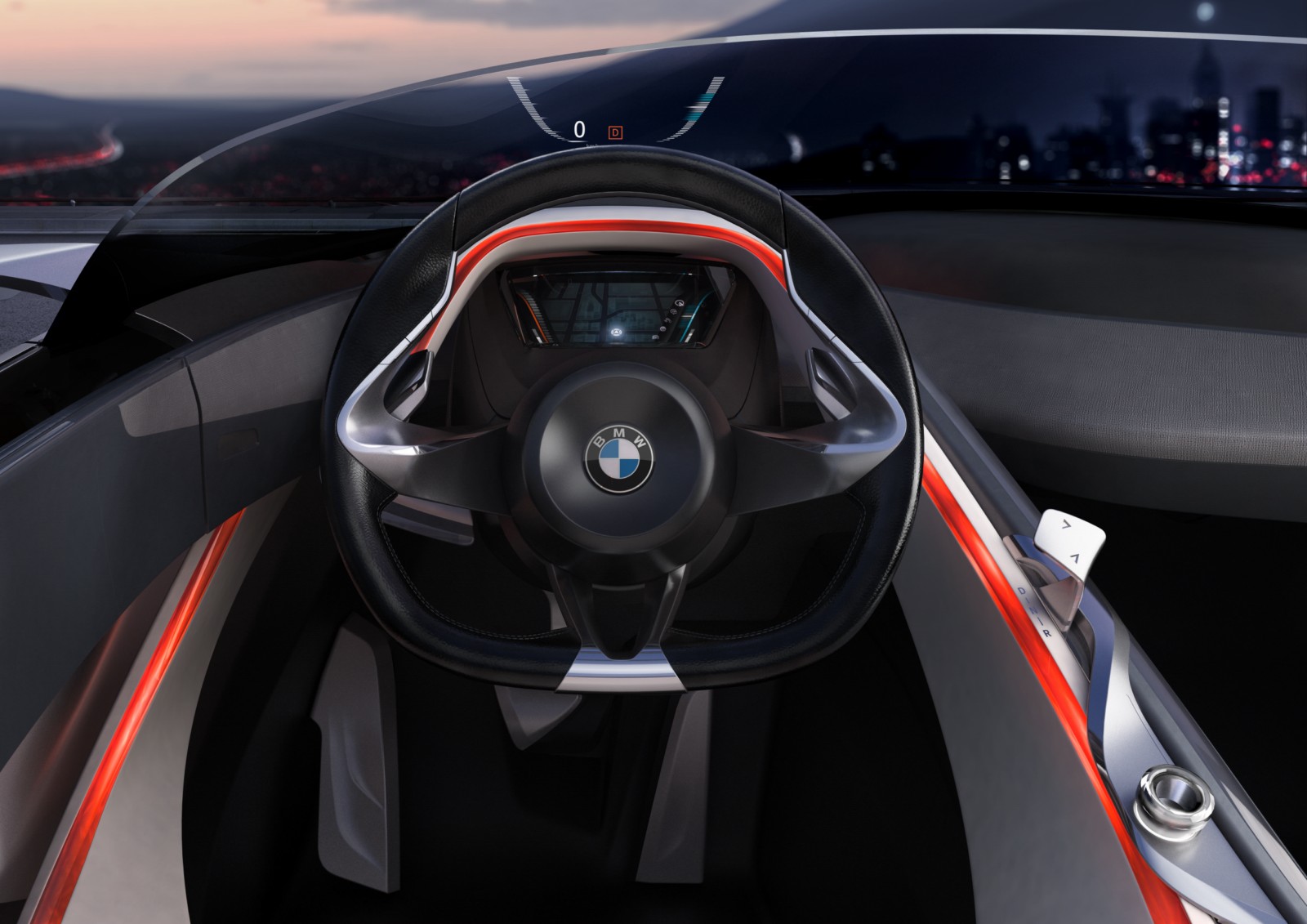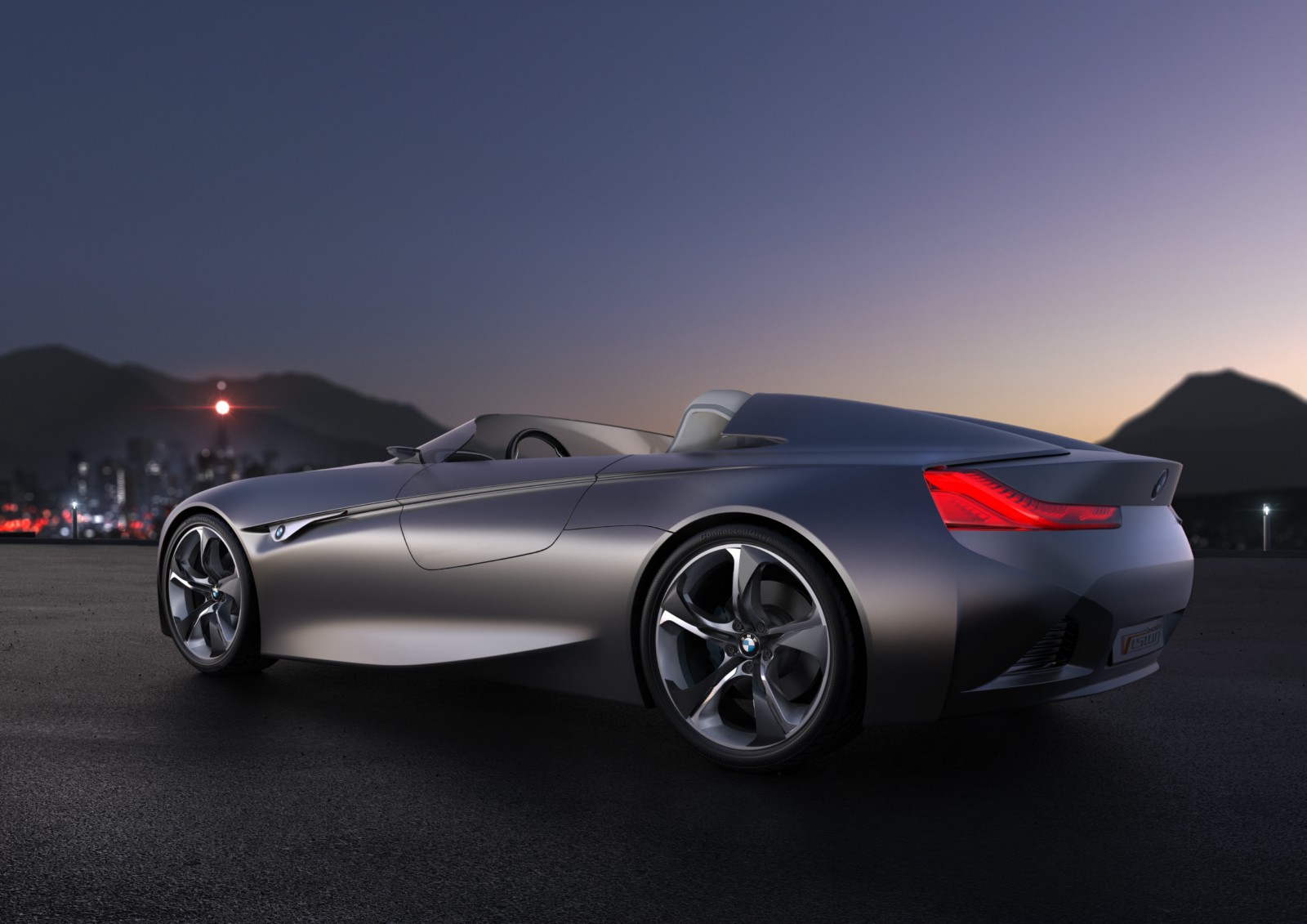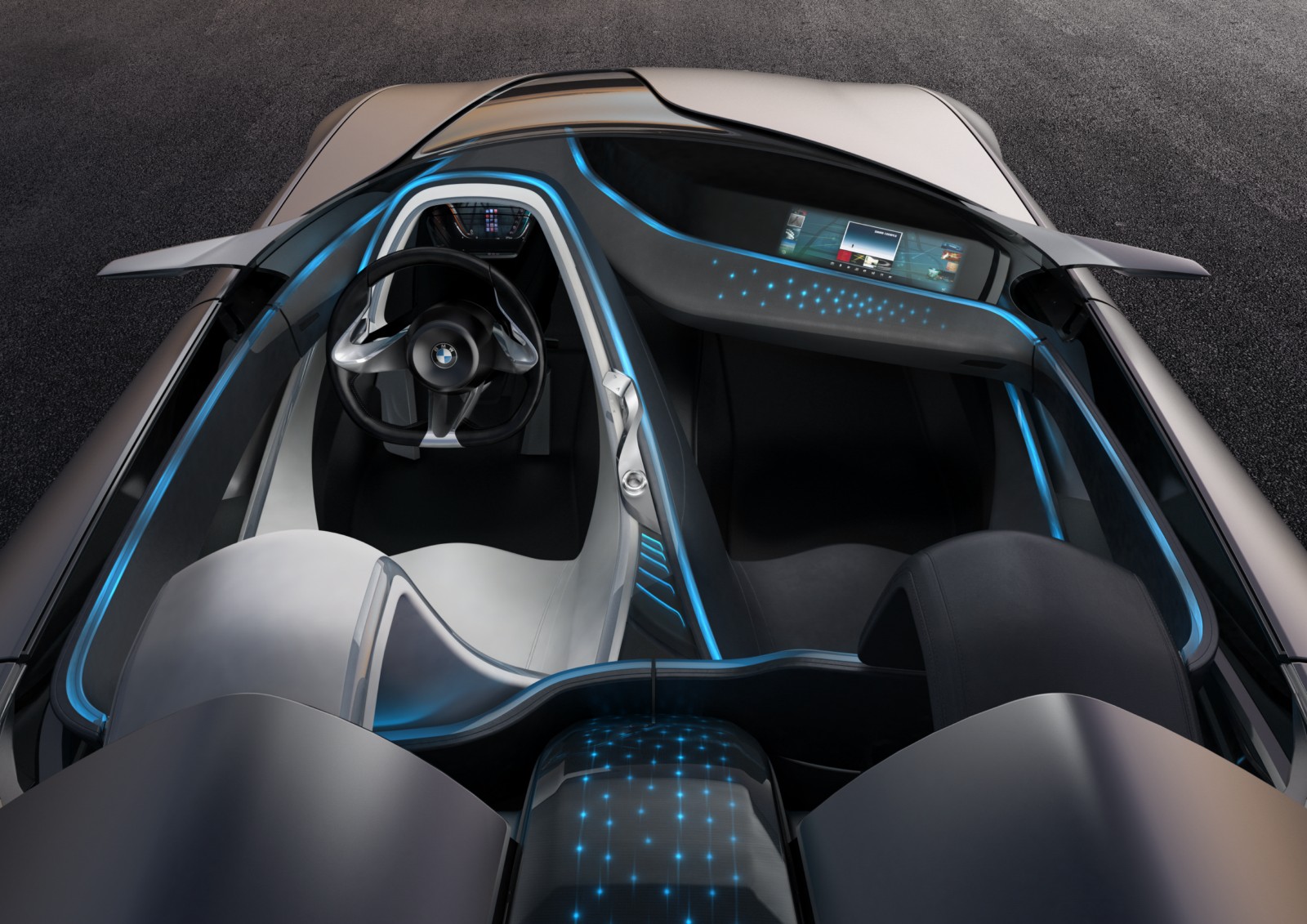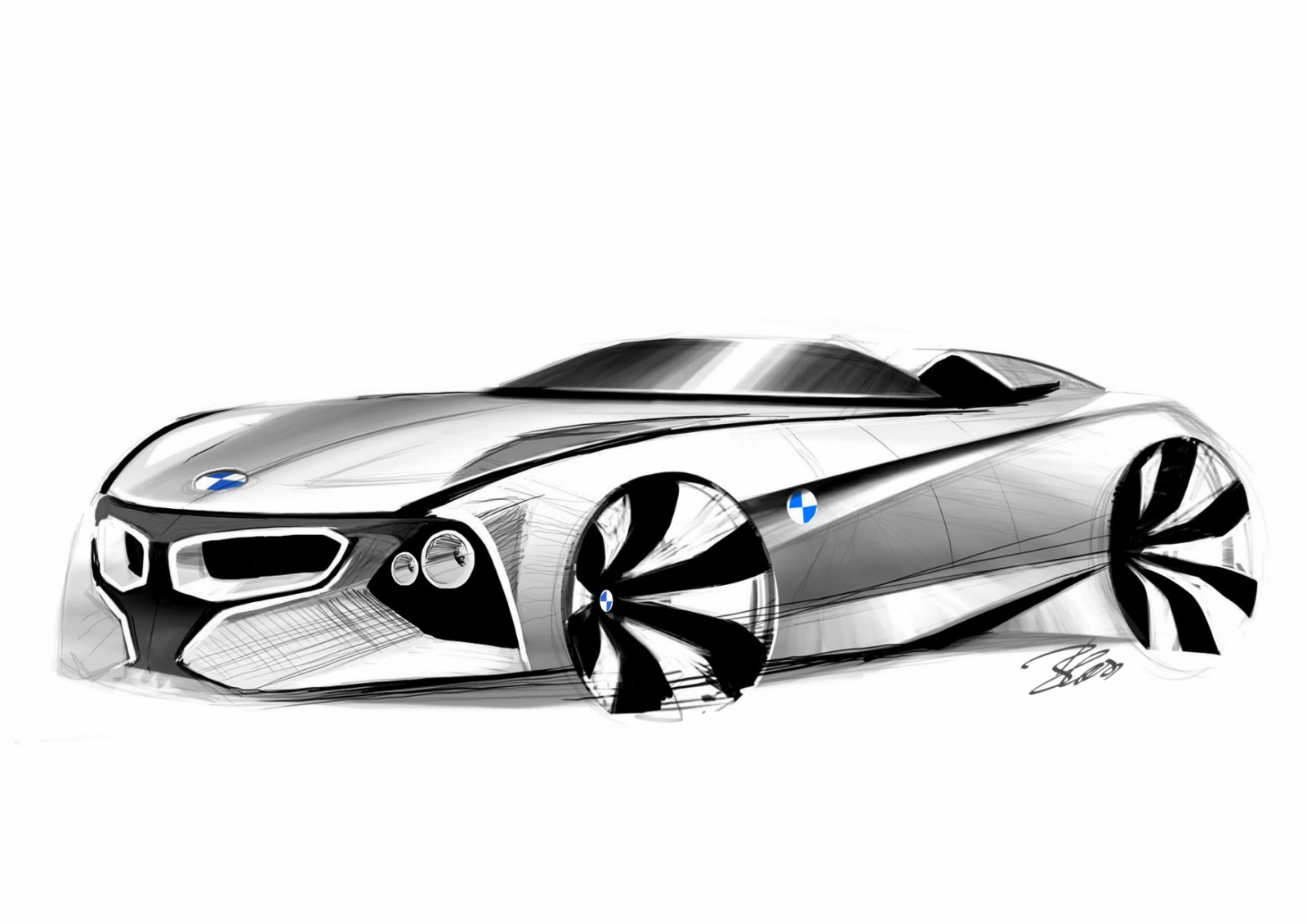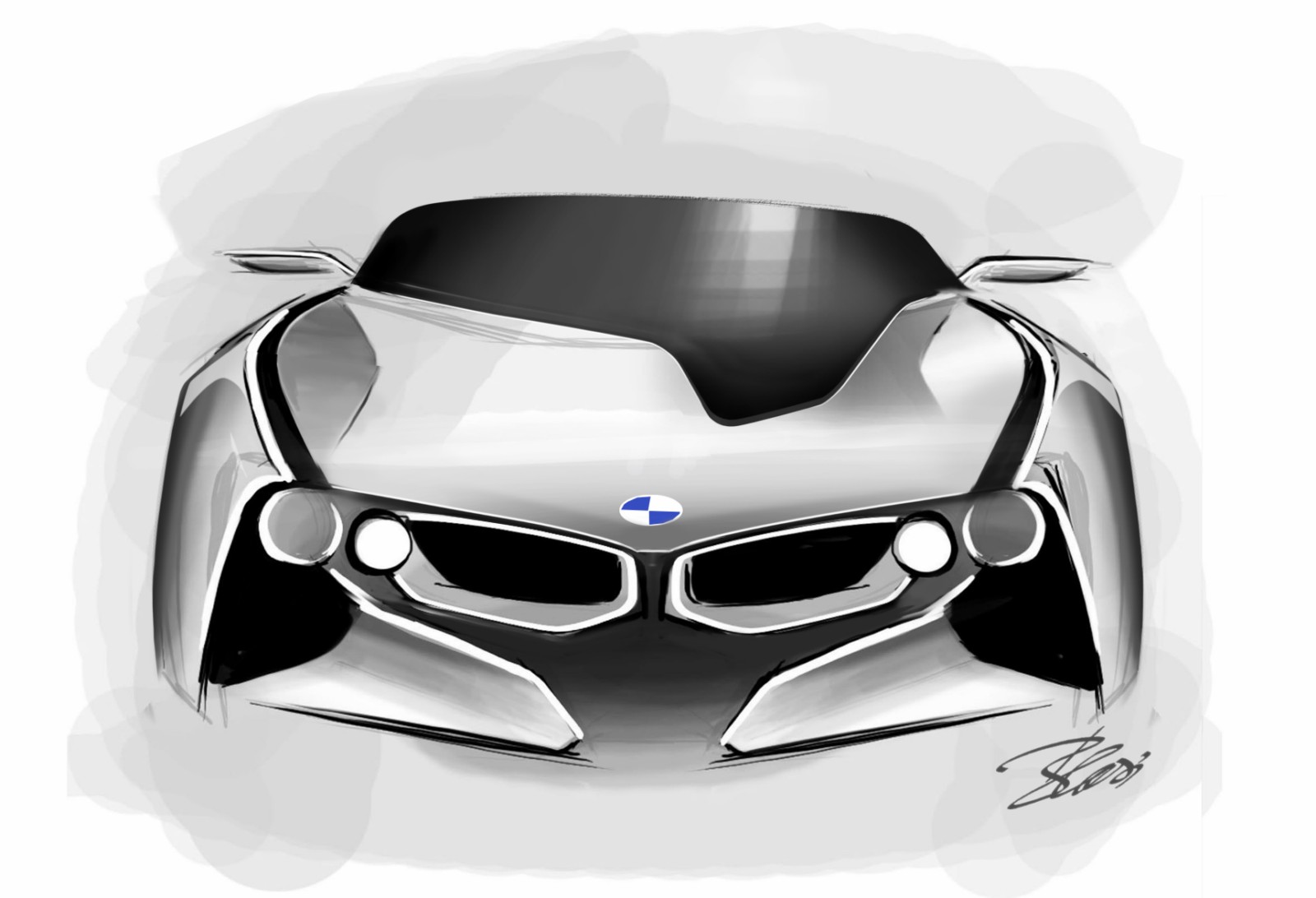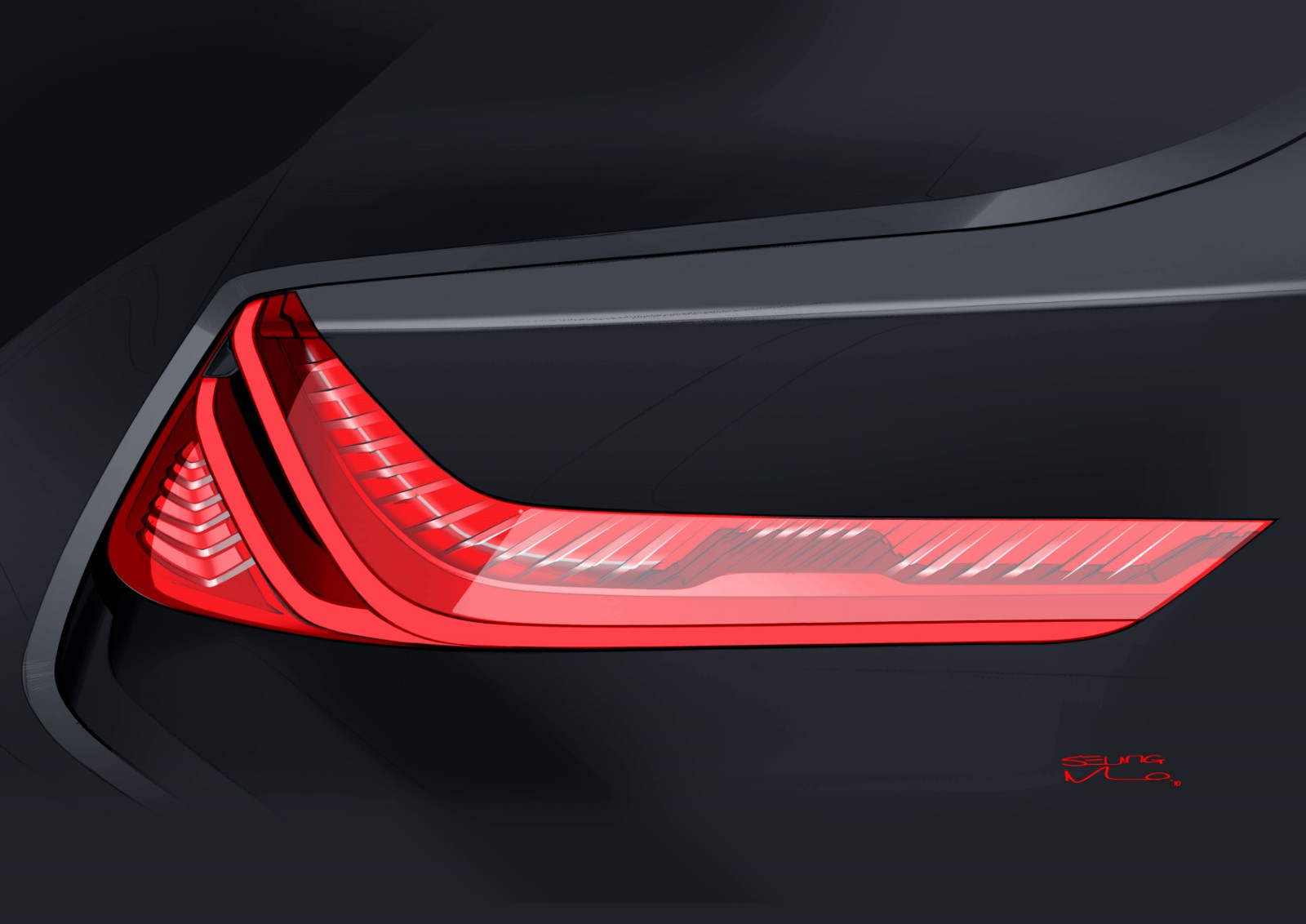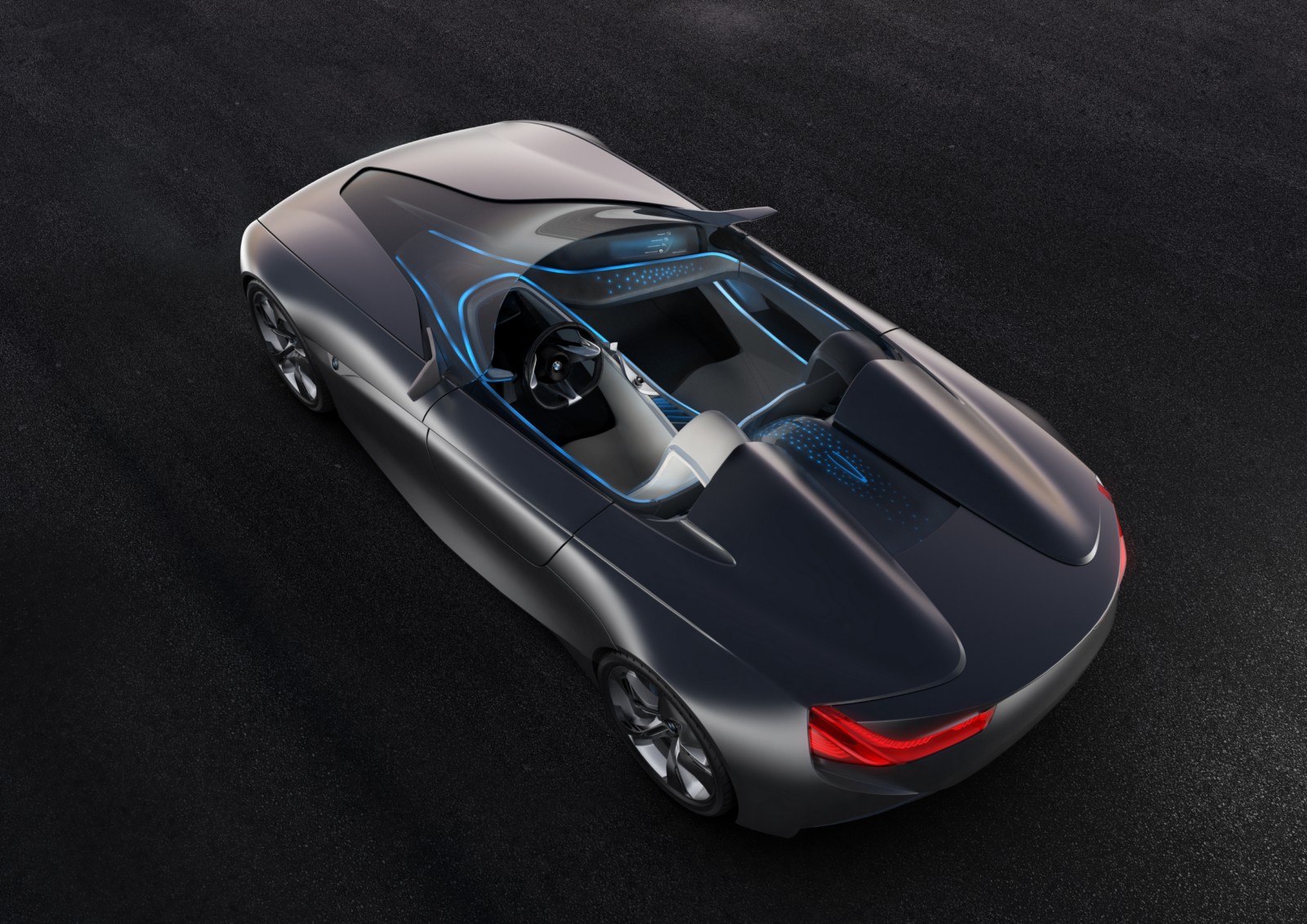With every new BMW, the main discussion revolves around design, and recently, it almost always starts with Bangle vs. Van Hooydonk design ideas. Without a doubt, the latest BMW Vision ConnectedDrive was conceived under the umbrella of Adrian Van Hooydonk. From ideas to execution and completion, BMW Vision concepts are said to take nearly twelve months and we believe the timeframe is quite accurate for the ConnectedDrive Concept.
Similar to the previous Vision Concept, EfficientDynamics, the latest design study from BMW showcases futuristic design lines that make use of the layering approach initiated with the first Vision Concept. The two-seater roadster features typical lines: long bonnet, short overhangs and strong, bold front-end. In a press release issued this morning, BMW extensively describes the new concept. Let’s have a look.
As a two-seater roadster charged with emotion, the BMW Vision ConnectedDrive is a particularly dynamic, purist interpretation of the characteristic BMW language of form: the long bonnet, the long wheelbase and the passenger compartment set well back seem to accelerate the vehicle even at a standstill. The bonnet and the windscreen flow into one another to form a homogenous surface and endow the
BMW Vision ConnectedDrive with an extraordinarily flat, sporting silhouette.
Within these tight roadster proportions, distinctive, concise lines flow over the taut surfaces of the vehicle’s bodywork. The resulting play of light and shadow imparts a fascinating and emotional character to this concept study. The expressive 20-inch wheels, fashioned in three dimensions, underscore the sporting, dynamic character of the vehicle.
The front of the BMW Vision ConnectedDrive manifests the typical characteristics of BMW design, with a strong horizontal orientation, stressing width. The kidney grilles and dual, round headlights have been designed in a particularly flat fashion and lend the front a dynamic, modern expression.
Below these, two large air vents emphasise the width of the vehicle, giving it a decidedly sporty look. The door concept is a particularly distinctive feature of the exterior of the BMW Vision ConnectedDrive. Developed with the innovative, electro-mechanical retracting door mechanism of the BMW Z1 in mind, which can be legally driven with its doors open, the idea has been extended and now finds application in the BMW Vision ConnectedDrive. Two sliding door elements – one inside, one outside – disappear into the bodywork of the vehicle when the door is opened, enabling entry. While the outer shell slides forward, the inner shell disappears into the rear area of the vehicle with a movement in the opposite direction. The BMW Vision ConnectedDrive can also be driven with the outer doors open, a central aspect of the vehicle.
The expressive, modern surface work evident at the front and on the sides of the vehicle is continued at the rear. Two large air outlets make the formal connection to the front and underline the sportiness of the vehicle at the rear. The rear lights, placed at the extreme outside of the back of the vehicle, feature the distinct BMW L-design and have a strong sculptural character. Just as at the front of the vehicle, the rear sensor technology is also integrated into the lights. The concept of layering used in the interior, in which a component takes on a number of tasks, is thus carried over to the exterior.
The BMW Vision ConnectedDrive concept car was consciously designed as a roadster, as the vehicle is able to show its overall creative concept best by way of the open roadster design. Seen from above, the interior design, light concept and exterior design fuse into a very clear, unmistakable statement: BMW ConnectedDrive.



